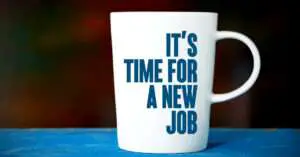How to prepare quotations effectively? 21 practical quotation skills and strategies are necessary for qualified sales!
After a new customer sent an inquiry and carefully quoted a price, there was no more information. Is the report too high and scares the customer away, or is it too low, making the customer feel like they are expert and dare not take risks easily? Old customers come to inquire, but they are also entangled. If they report too low, they can’t make money. If they report too high, they are afraid that he will run away with others. As a business person, how to make a more effective quotation? 21 quotation methods and strategies, share them for your reference.
1. Before making a quotation, be sure to find the key person.
If it’s just a general customer, the quotation is “only three minutes”, and only those who can make a decision can “tell the whole thing” when the key is encountered.
2. Don’t make a quotation lightly before finding out the customer’s background.
Be sure to ask first, is the customer buying personally or is the company buying? Do you want an invoice? About how much to buy? What’s the budget? Have you seen other products? Otherwise, you are led by the customer, and you have already lost when you answer the specific amount of money.
3. Different customers have different quotations.
1) For those customers who do not know the market without a purpose, the quotation can be slightly higher, which not only provides the other party with a yardstick to evaluate the value and quality of our products, but also leaves a certain bargaining space.
2) Those customers who don’t know much about the industry and products should make a reasonable quotation.
3) For the insiders who are familiar with the market, they should try to keep the price down, small profits but quick turnover, and retain customers.

4. Find the right time and quote again.
1) When the customer is too busy to make the payment, only need to quote an approximate price so that the other party has a general impression, and the two parties will discuss the details separately.
2) When customers have a clear purchase intention, they should seize the opportunity to quote specific prices so that they have a more specific understanding of product prices.
3) When a competitor is present, it is not advisable to make a quotation. Otherwise, once the competitor has the bottom line of our price, it will put oneself in a disadvantaged position.
Also Read:- 28 Gulf Job Interview Questions and Answers
5. Allow room for quotation.
The first quotation must not exceed the reserve price, and sufficient room for negotiation must be left.
Because quotations are almost difficult to complete at one time, most customers will bargain. In addition, many customers, especially large corporate customers, will first inquire about prices and information before actually purchasing, and then return to the company to discuss. They will remove the lowest and highest quotations first. Why do they remove the lowest price? It is because the participants may not have all contacted the supplier, so it is not ruled out that they will be subjectively judged, and the price is much lower than that of others. It is nothing more than quality problems or the use of cheap raw materials.
If you are afraid that the report will be too high and scare the customer away, you can add additional conditions . For example, “If it is a small amount, the price is 800 yuan each.” The purchase prerequisite here is “a small amount”; if the other party says, “I want one, is there no room for negotiation?” Then you can say if If it is one, we have a trial price of 750. If you buy the second one, it will be 800. For another example, can customers ask for discounts? You can answer “Can you make an order today, pay now, and you can get a discount” or “Would you like to pack? Don’t pack for a discount”.
6. Introduce product advantages before quotation.
Customers will feel expensive and worthless before buying something because they don’t fully understand the product. Therefore, before quotation and price negotiation, it is necessary to lay the groundwork for the value of the product so that the customer’s expectation of the bargaining range can be reduced. You can tell stories with voice and emotion, such as the origin of the product name, design concept, processing technology, and product characteristics.
At the same time, assist with authoritative data to tell you what problems or worries your product can solve for customers. If conditions permit, customers can be guided to try it out. In short, try various methods to stimulate the other party’s desire to buy, and then turn to the price.
7. Negotiate prices with customers, don’t bypass these three points.
Before discussing the price, we must first figure out these three items: order quantity, delivery date, and after-sales processing issues . Because these three points are directly related to cost issues. For example, if the customer is urgent, it will inevitably require the factory to work overtime for production; if the order is small, the frequency of the factory’s machine production will be high; and the raw material procurement cost compression space is also small; besides the after-sales problem, there are more after-sales problems. Whether it’s a problem from the factory or the customer, if the product is returned to the factory, there will be maintenance costs and round-trip freight. If the agreement is not good, it will also accumulate a lot of costs.
When inquiring, be careful to be as tactful as possible. If you want to ask the other party about the purchase amount, you can use other questions to elicit it. For example, how much do you usually purchase, but this time is more or less. Or how much did our previous customers purchase? How about your side?
8. When approaching the bottom line, present a gift to promote the transaction.
If the talks continue, the price will break through the bottom line, but customers will still be reluctant. At this time, you can try to give small gifts or other small value-added things to deduct the discount requested by the customer, and at the same time satisfy the customer’s mentality of taking advantage.
9. If the price raised by the customer has exceeded your authority.
If you conduct research and communication, the customer really wants to buy, and the other party’s purchase amount, payment method and other conditions have been figured out, but the price is too low, and it has broken the bottom line of the price you can grasp. This time, a direct rebuff must not say no, but you want to apply your leadership to confirm, let him play rescue, because you do not know how much his hands concession space.
Also Read:- Modify Your Resume to Meet Gulf standards
10. Guide the quotation.
That is, use some preconceived language to cater to customers’ psychology of seeking low prices, and guide customers to accept their own quotations. For example: “You are very lucky today, we just happen to have an event, and we have a lot of discounts than usual.” “It’s cheaper recently, XX yuan.” “It’s still the old price, 5 yuan a catty.” In addition, when quoting, the voice must be loud and clear, and the attitude must be firm and clear, so that the other party feels that this is the lowest price.
11. Compare quotations.
The comparison quotation is to compare one’s own products with other high-priced products, such as imported products or brands of various models, for example, computer models with high, medium and low-end configurations at different prices.
12. Unbalanced quotation.
While providing the main product, it also provides optional products to match it. For example, the barbecue at the barbecue shop is cheaper, but the beer is expensive; the vegetable shop at the vegetable shop is cheaper, and the additional meat is a bit more expensive. In this way, the main products are used to attract customers and the additional products are used to make profits.
13. Bundled quotation.
Also called a package quotation, it is mainly to sell two or more products or services as a whole to customers at a special preferential price. On the contrary, if you buy a single product, the price is expensive. For example, it is more expensive to buy burgers, fries, and cola in a fast food restaurant than a combination of the three. For another example, when a company released product A, it also launched product B. Because product B lacks bright spots and the price is very pitted, customers intuitively change that it is better to buy A than to buy B, thereby increasing consumer desire. This strategy cleverly changes the question from “Should I buy?” to “Which one should I buy?”
14. Negative and positive quotation method.
For example, the same product can be quoted in two ways: one is “although the price is higher, but the product quality is very high”, the other is “the product quality is indeed very good, but the price is slightly higher”. These two methods are just changed in order, but users will have completely different feelings. The first way is to focus on the product quality, deepening the impression of good quality, while the second way is to focus on the high price, which tends to make users feel daunted, thereby weakening their purchases. desire.

15. Tell the good news separately.
We usually see buying 2999 yuan tourist routes, free trolley cases, free parasols, and waterproof covers; buying 3999 yuan computers, free earphones, and free mouse pads. But why doesn’t the seller directly say that 2999 includes tourist routes + trolley boxes + umbrellas, but should list them? It is because of the “nuclear explosion effect”, “good news should be said separately, and bad news should be given at once”. The effect of separating gifts is not simply a summation, but sometimes brings customers a leap of pleasure.
16. Practical quotation tips.
A) Absolute numbers do not need percentages.
Which one is more attractive, 15% straight down or 300 yuan off? It must be the latter. Because when using percentages to state the discount, the customer has to recalculate the account. It is more straightforward and effective to tell the customer the specific amount directly.
B) Use the numbers 8 and 9 skillfully.
Have you found any shopping malls or supermarkets? Many commodity prices are at the bottom of “8” or “9”, because such pricing will give buyers a feeling of saving money. Although the difference between 39 and 41 is only 2 yuan, in the buyer’s mind, one is more than 30 and the other is more than 40. Conversely, if you don’t want to sell a product, you can set its mantissa to 1.
C) Non-integer pricing method.
Non-integer pricing will give customers the feeling that the pricing is accurate, because it is clear that every cent is calculated, and it will give people the illusion of a reasonable price. Imagine that we go to the vegetable market to buy vegetables, and the stall owner tells you 20 yuan after the weighing. At this time, will you make a whisper, think it’s such a coincidence, there is nothing in it? To put it another way, if the stall owner tells you that it is 20 yuan and 5 cents, and 5 cents are free, just give 20 yuan. Then do you think you are taking advantage. Non-integer numbers tend to be more easily recognized by buyers and easier for the other party to pay.
Also Read:- How to dress for a job interview?
17. Convert the price into a smaller unit.
For example, for products with a long service life and high prices, such as phones and cars, the overall quotation can be converted into how much money a month, or how much money a day, which will give customers a feeling of value. For reference, it is now popular to buy in installments and pay in installments both online and offline.
18. Same price strategy.
I believe many people have visited the 2 yuan store and the 10 yuan store. Why are the stores always crowded? To put it bluntly, everyone feels that the prices of so many products are the same, and they will definitely be very cost-effective. At this time, the customer’s focus is not entirely on the price itself, but on which product is more advantageous.
19. Invisible price increases.
Quotations for old customers are easy to appear. If there is no increase in the price, there is no profit. If the price is increased, the customer will run away. How can the increase be more acceptable to the customer? Can be taken, invisible price increases. To put it bluntly, it means to increase prices or reduce costs in disguise by upgrading products or replacing packaging (reducing capacity). Learn about Coca-Cola or other bottling and bottled beverage strategies.
20. Discount VS full reduction.
If a product has a standard room of 1,000 and is discounted at 20%, and if it is full 1,000 minus 200, it seems that the cost is the same, but the feeling to customers is quite different. The 20% discount will make the customer think that the product is 800, and the latter will be reduced by 200 from 1,000, which will make the customer already believe that the product is worth 1,000, and the 200 off will be earned by themselves. To put it bluntly, in the process of consumption, there is still “income” which will greatly reduce the guilt of customer consumption.
21. Don’t be fooled by the tension created by customers.
During the sales process, many customers are very good at creating tension. For example, “I will have a meeting soon”, “I will board the plane in fifteen minutes” or other reasons, saying that they are short on time. As soon as the customer becomes “nervous”, the salesperson becomes nervous, thinking about saving time for the customer, and it is easy for the customer to ask questions directly without thinking about it, and it is easy to regret it after saying it. Under such conditions of emotional tension, it is easy for people to lose their minds, and then to talk about such a price-sensitive topic, it is easy to fall into the pit.

It is recommended that once you encounter a customer who is in a hurry, you should find a reason to leave the scene temporarily, or make an appointment with the customer to talk to the next time , such as “Since you are so busy today, I will visit again next Wednesday. Would it be convenient for you?” Or “Why don’t I go back and make a quotation for you and send it to your email. What is your first purchase quantity…”. Otherwise, if it continues, the salesperson will always be in a weak and passive situation and can only be led by the nose.
The Midsummer Workplace Toolbox only shares the most practical workplace experience and methods.




























